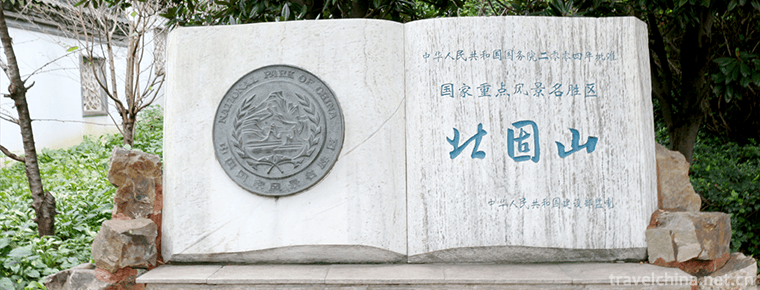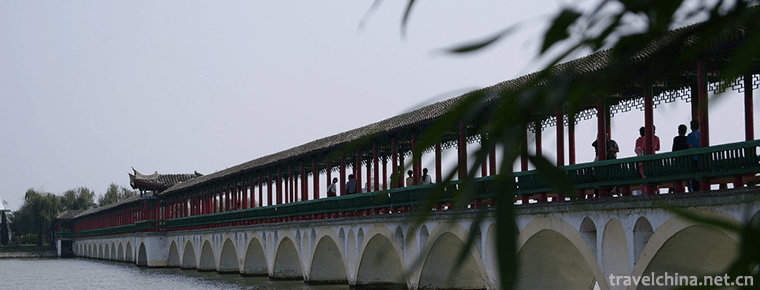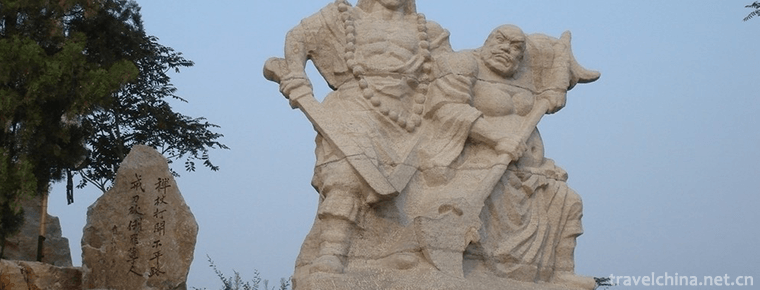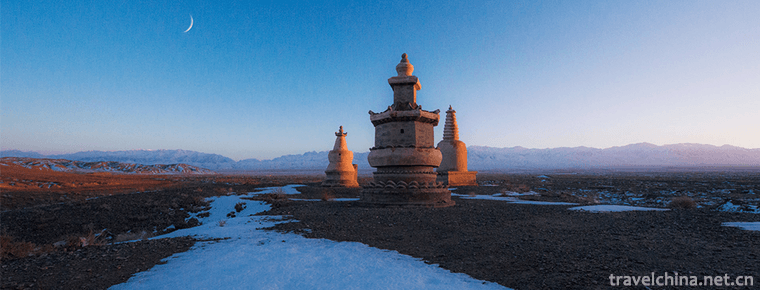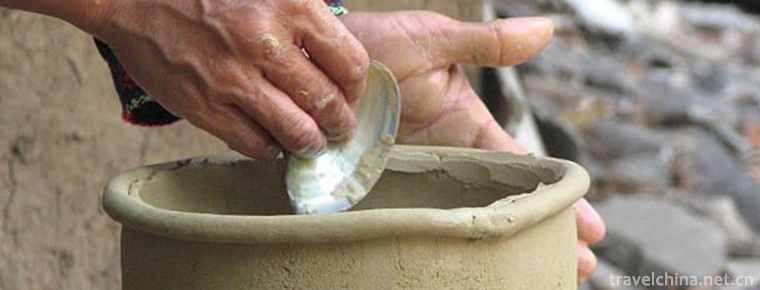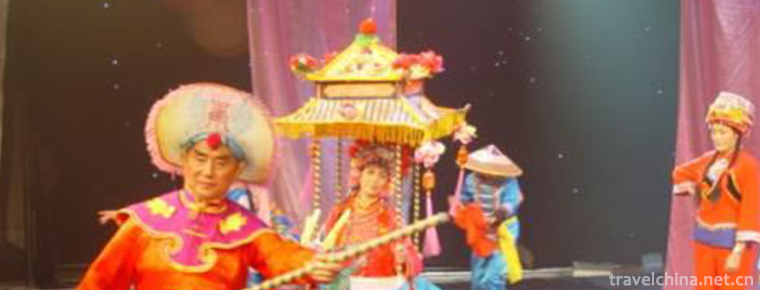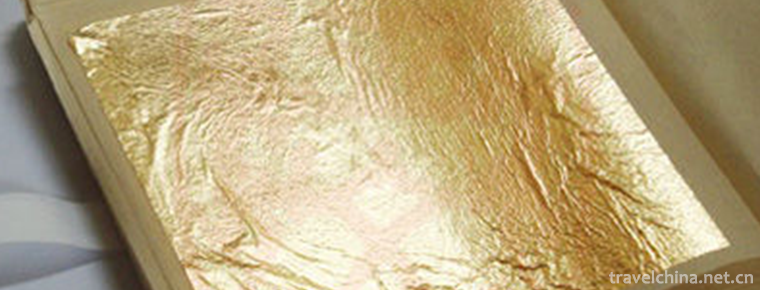Shandong Tianyu Natural Museum
Shandong Tianyu Natural Museum
Shandong Tianyu Natural Museum is locatedin the western section of Lianhuashan Road, Pingyi County, Linyi City, ShandongProvince. It is the largest natural geological museum and the largest dinosaurmuseum in the world.
The museum, with a total investment of 400million yuan, was completed and opened in September 2004, with a constructionarea of 32,000 square meters and a display area of 28,000 square meters. TheMuseum has one scientific research museum, one 4D dynamic cinema, 28 exhibitionhalls and more than 390,000 exhibits. More than 1200 dinosaurs and more than2200 bird fossils are preserved in the museum. The library publishes more than30 scientific achievements in scientific journals such as Nature and Science.
Since its establishment, Shandong TianyuNatural Museum has been named "Shandong Science Popularization EducationBase", "Shandong Province Care for the Next Generation of SciencePopularization Education Base", "China Paleontology SciencePopularization Education Place" and "National AAAA Tourist ScenicArea".
Historical evolution
Shandong Tianyu Natural Museum is locatedin Pingyi County, Shandong Province. It was built and opened in September 2004.In 2007, it was awarded National AAAA Tourist Scenic Spot. The building area is32,000 square meters.
Collection
There are 1106 complete individual dinosaurfossils in the museum, including Golden Mountain Dragon 8 meters long and 6meters high, lovely parrot-billed dragon in shape, and Avian Sinosaurus, therepresentative of the initial stage of evolution from dinosaurs to flyingbirds.
The Tianyu Museum of Natural History hasbeen recognized as the "largest Dinosaur Museum in the world" by theBritish headquarters of Guinness World Records for its 1106 complete individualdinosaur fossils. As of August 2010, the museum has won the "GuinnessPrize of the World" for six collections, known as "a book depictingnatural life". The Tianyu Natural Museum is considered to be the largestnatural geological museum in the world.
The exhibits are mainly mineral specimensand paleontological fossils. In the exhibition hall of 9 mineral specimens,there are thousands of rare specimens from all over the world. In 2006, it wasawarded the Top Ten "Xinjiang Tourmaline" by the European Journal ofMineral and Gemstone Specimens, which integrates the essence of heaven andearth and is glorious and world-class. The silicified wood produced in Qitai,Xinjiang, is 38 meters long and ranks the highest in the world. It was recordedin the "Guinness" world record in September 2007. The Amethyst caveproduced in Uruguay is 3.3 meters high and weighs 3.7 tons, which is thehighest in the world. The 3.9-ton crystal single crystal in the East China Seaof Jiangsu Province is the largest in Asia; the 338.6-carat diamond is thelargest super-large diamond ever produced in China, which is 179.82 caratsheavier than the most "Changlin diamond" (158.78 carats) in China. Ithas diamond luster and shiny treasure. In the largest gypsum SpecimenExhibition Hall in the world, all kinds of diamonds are transparent. Theplaster is crystal clear and dazzling; entering the world's largest stalactiteexhibition hall is like entering a dream world, which makes people daydreaminfinitely.
Among the six exhibition halls of GuanlingBiota in Guizhou, nearly 10,000 fossil specimens of various ichthyosaurs,Guizhou Dragons, Haydrosaurus, Hailong and Lilium are found in the Triassicstrata, ranging from large ichthyosaurs up to 18 meters long to smallichthyosaurs less than half a meter long, showing the diversity and complexityof Triassic organisms.
Of the seven exhibition halls of JeholBiota, there are nearly 200 parrot-billed dinosaur fossils in the dinosaurexhibition hall. Among them, the gastrolith preserved in the stomach of AvianDragon fossil and the fossil formed by food at that time are of greatornamental and scientific value. "Ten Thousand Fish Hall" shows morethan 100,000 different kinds of fish fossils more than 120 million years ago,which is one of the best in the world. Thousands of feathered dinosaur and birdfossils rarely seen in other museums around the world provide a solid physicalexample for people to study the extinction of dinosaurs and the origin ofbirds.
The Museum has a collection of nearly 1000deer and rhinoceros fossils from the Shanwang Biota strata, which are rare inother museums. They can be seen here in various carnivorous fossils, insectsand plant fossils. Seeing these fossils is like reading an endless "tenthousand volumes of books", which makes people linger and forget toreturn.
Main attractions
Dinosaur Hall
The hall mainly displays the fossils ofMesozoic animal dinosaurs. Dinosaurs appeared in Triassic, flourished inJurassic and extincted in Cretaceous. Because of the warm and humid climate ofthe Mesozoic, the four seasons are like spring, and plants grow everywhere, itis very suitable for reptiles to survive, especially all kinds of dinosaurs.They multiply and differentiate rapidly, spread all over the world, and havethousands of species. They controlled the three major habitats of the time:sea, land and air, and dominated the earth for 150 million years. Dinosaurs areone of the most successful animal species on earth.
The Museum has a collection of 8-meter-longand 6-meter-high golden mountain dragons, lovely parrot-billed dinosaurs, andthe first representative of the evolution from dinosaurs to flying birds, theSinosaurus, the earliest beaked bird in the world, the sage Confucius bird. Inaddition, thousands of dinosaur egg fossils with different shapes weredisplayed to the audience. The display of various dinosaur fossils is of immeasurablesignificance not only to the study of the origin of birds, but also to thestudy of the physiology, ecology and evolution of dinosaurs.
Butterfly Herbarium
The butterflies on display here includebutterflies growing in high mountains and cold areas of 2500-5000 meters abovesea level, such as Tianshan Mountain in Xinjiang and Changbai Mountain inNortheast China. Their wings are as thin as silk. In addition, the preciousbutterfly species from Southeast Asia, Japan, Malaysia, Thailand and so on werealso exhibited, including the mimetic insect dead-leaf butterfly,purple-spotted ring butterfly, Cuifeng butterfly, Bawang butterfly. The vividand colorful butterflies are like colorful flowers, which bring you to thebeautiful nature.
Practical information
Ticket information
Ticket price: 80 yuan
Preferential policies:
A. Ticket-free policy: the height ofchildren is less than 1.2 meters free; 70 (including) elderly people over theage of one year are exempted with valid certificates, active servicemen withactive service officer certificates, disabled persons with disabilities,journalists with valid certificates.
B. Preferential policies: children's height1.2 (including) - 1.4 (including) meters to buy children's tickets in scenicspots (can be booked online), 60 (including) - 69 (including) one-year-oldpeople with valid certificates to buy preferential tickets in scenic spots (theabove preferential policies, need to buy in the scenic spots on their own).
3. Warm tips:
(1) Additional payment items: 3-D movies.
(2) Tickets are valid on the day ofdeparture. You need to enter the park and buy tickets again.
(3) In order to ensure ticket collectionand admission smoothly, please fill in the real name, mobile phone number andother information when booking.
Opening Hours
April-October 08:00-17:00
November-March 08:00-16:00
Traffic Information
Self-driving:
Linyi-Scenic Spot: Beijing-ShanghaiExpressway-Rilan Expressway-Rilan Expressway-58.0 km along Rilan Expressway,leaving Pingyi/Zaozhuang Exit and entering PingyiInterchange-S240-G327-S241-Lianhuashan Road-Terminal
Address: Pingyi County, Linyi City,Shandong Province
world record
The largest dinosaur museum: Tianyu NaturalMuseum in Shandong Province was opened in 2004. Its building area is 32,000square meters and its exhibition area is 28,000 square meters. It contains morethan 1,200 dinosaurs and 2,200 bird fossils. It is the largest dinosaur museumin the world. (Guinness)
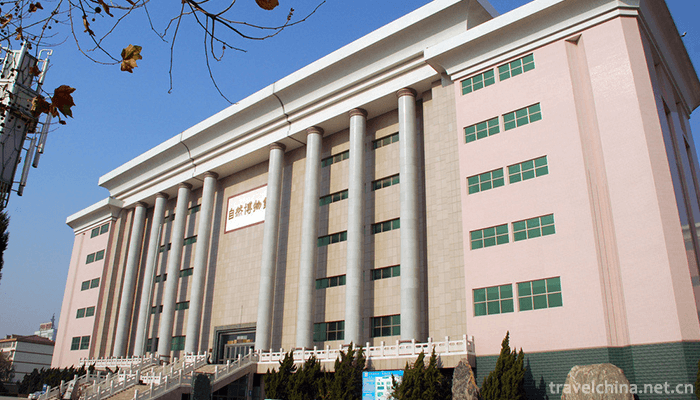
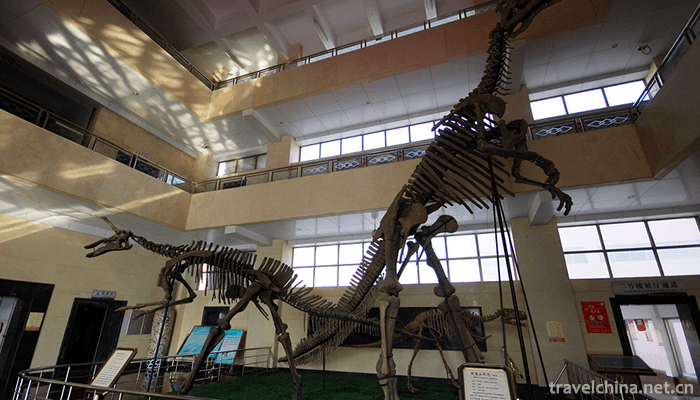
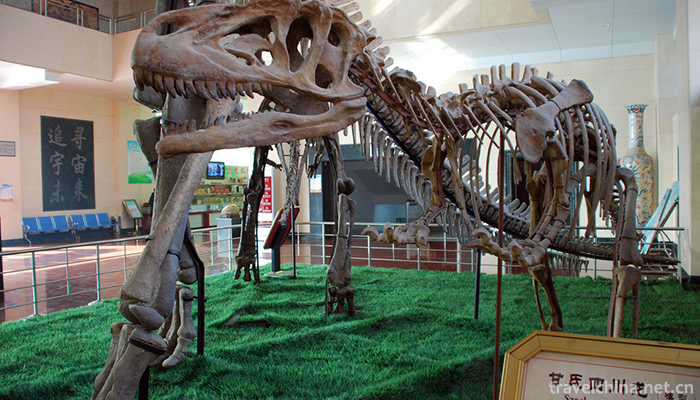
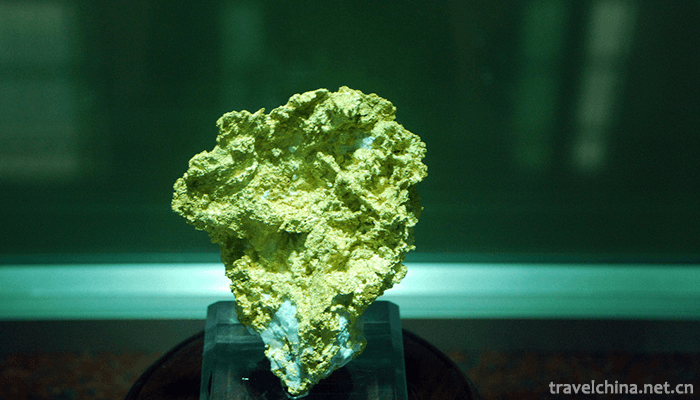
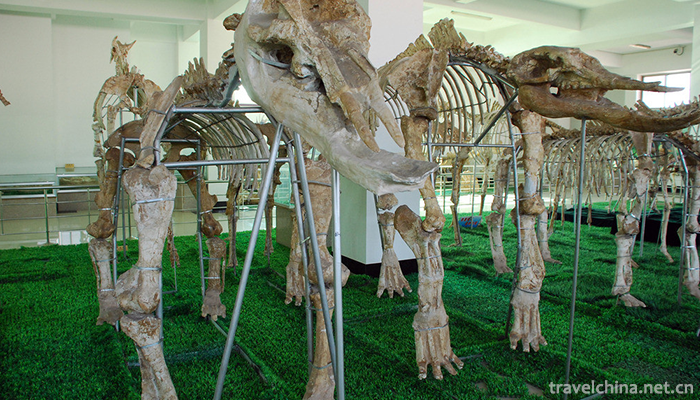
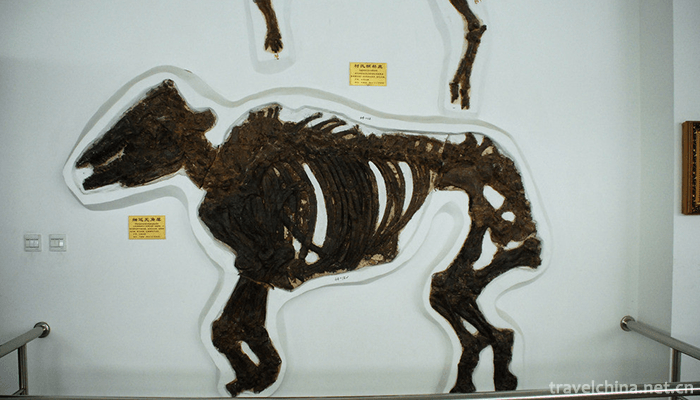
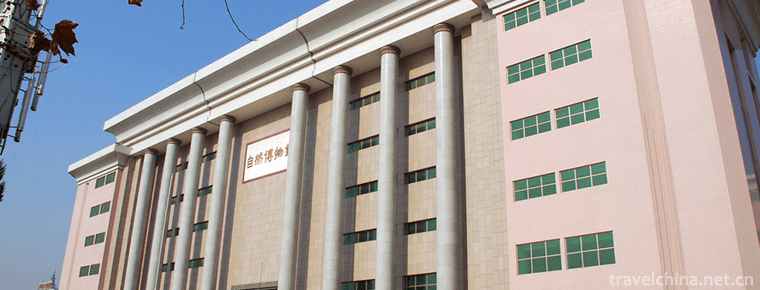
Shandong Tianyu Natural Museum
I am a retired Micropaleontologist and would like to make a trip to China specifically to see the excellent collection of Jehol Biota feathered dinosaurs and Mesozoic birds at the Shondong Tianyu Museum of Natural History. What would be the recommended way to travel to the museum from Beijing? Being unfamiliar with your public transportation system, road system, or language, the simplest way to get there would be the best. Would you know if there are car service in Beijing which may be hired for the ride?
Thank you very much.
There are three options for you to go from Beijing:
1. Beijing car rental, there will be car rental services at the airport
2. Take a high-speed train to Pingyi County, which costs about $15
3. Fly to Jinan, then travel from Jinan to Pingyi after the disaster
If you arrive in Beijing, volunteers or passersby at the airport, bus station, and train station will be happy to help you. never mind. If you have any other questions, you can send me an email to consult: sendtous@qq.com
-
Beigushan HillBeigu Mountain
Beigu Mountain, one of the three scenic spots in Zhenjiang, overlooks Beigu, pillows the river, rocky walls, and the mountain is dangerous, so it is named Beigu Mountain
Views: 166 Time 2018-12-06 -
Bali River Scenic Area
Bali River Scenic Spot is a national AAAAA-level tourist attraction with "Global 500 Top" environmental protection. It is located in Yingshang County
Views: 272 Time 2018-12-08 -
Shuipo Liangshan Scenic Area
Shuipo Liangshan Scenic Area is located in Liangshan County, Jining City, Shandong Province, with an area of 4.6 square kilometers. It was named for the Liangshan Uprising in Shuihuzhuan, one of the f
Views: 198 Time 2019-02-08 -
Sunan Wenshu Temple Scenic Spot
The Sunan Wenshu Temple scenic spot is located at the foot of the Suzhu Chain, the main peak of Qilian Mountain in Sunan County, Gansu Province. It is a national key cultural relic protection unit and
Views: 189 Time 2019-02-13 -
Primitive Pottery Making Skills of Li Nationality
The primitive pottery making technique of Li nationality, the traditional handicraft technique of Changjiang Li Autonomous County, Hainan Province, is one of the national intangible cultural heritages
Views: 211 Time 2019-05-13 -
Lichuan lantern song
Lichuan Lantern Song is a traditional folk dance that originated in Baiyang area of Lichuan City. Many folk songs in Lichuan Lantern Song and the ancient bamboo branch song inherit in one continuous l
Views: 173 Time 2019-05-13 -
Mongolian embroidery
Mongolian embroidery is a kind of handicraft craft formed in the long-term production and life of the Mongolian people in China. Mongolian embroidery not only embroiders on soft fabrics, but also embr
Views: 183 Time 2019-06-03 -
Forging Technology of Nanjing Gold Foil
Nanjing gold foil forging technology, local traditional handicraft in Nanjing, Jiangsu Province, is one of the national intangible cultural heritage.
Views: 137 Time 2019-06-07 -
Tamdrin Dingzhen
Zhaxi Dingzhen (Chinese Name: Ding Zhen), born in 2000, lives in Litang County, Ganzi Prefecture, Sichuan Province.
Views: 575 Time 2020-12-01 -
Climate of Luzhou
Luzhou city belongs to subtropical humid climate zone, and the three-dimensional climate is obvious in the southern mountainous area. It has high temperature, sufficient sunshine, abundant rainfall, four distinct seasons, long frost free period, temperature, light and water in the same season
Views: 384 Time 2020-12-14 -
Hydrological survey of Mianyang
Affected by the landform, Mianyang has abundant precipitation, large runoff, vertical and horizontal rivers and developed water system. There are more than 3000 rivers and gullies in the city. All rivers and gullies flow into Fujiang, Bailongjiang and Xihe
Views: 345 Time 2020-12-14 -
Yibin transportation
Yibin is a transportation hub city in South Sichuan, which is famous for its comprehensive three-dimensional transportation network of water, land and air. It is located at the starting point of the golden waterway of the Yangtze River and the strategic point of Sichuan Yunna
Views: 142 Time 2020-12-18
